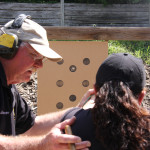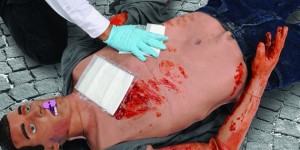When it comes to the Second Amendment, the American Civil Liberties Union (ACLU) has long-been out of sync with its mission “to defend and preserve the individual rights and liberties guaranteed by the Constitution and laws of the United States.”
An op-ed written by ACLU senior policy advocate Harold Jones, and published in the Pittsburg Post-Gazette, shows just how out of sync they really are.
Written in response to the “emerging national debate” about having armed persons in place to protect our students, including calls to arm police in schools around the City of Pittsburgh, Mr. Jordan argues that the real debate “is not about whether school police should be armed but about how best to improve school environments and ensure student success while minimizing unnecessary student arrests.”
While there is no doubt that students' chances of success are diminished when in an active killer attacks and no-one is around who can protect them, Mr. Jordan doesn't think that having armed persons in place to immediately respond is a good idea. He thinks it'll somehow improve the school environment to continue to allow the killing to continue until other armed persons – sometimes ten or more minutes away – can arrive and stop the attack. Don't believe me?
Unarmed school staff does not mean that schools are defenseless in emergency situations. School districts have arrangements, formal or informal, with local law enforcement in which outside assistance is provided when needed in emergencies, such as when there is a bomb threat or serious injury.
The logical conclusion of Mr. Jordan's argument is that it's worth the extra lives lost waiting for other armed help to arrive in order to prop up some false notion of school building utopia.
Mr. Jordan opines that “the most immediate impact of arming school police would be felt by students,” and that “having officers patrol the hallways with firearms sends a negative message to students.”
We definitely wouldn't want to send a message that our students are at least as important to us as our rock stars and politicians, now would we?
Mr. Jordan continues:
There is no evidence that arming school officers increases overall safety or improves relationships within school communities. Having an armed officer stationed in schools has neither prevented nor stopped “active shooter” incidents. It did not at Columbine High School nor has it elsewhere.
I beg to differ.
In the Columbine attack, the armed officers were outside the building when the attack occurred, and had been trained not to enter back into the building during an attack until a heavy police presence had time to arrive. That out-moded and life-costing training is no longer in effect.
Furthermore, there are numerous examples of armed persons stopping active killers at schools. Pearl High School (1997). Appalacian Law School (2002). Sullivan Central High School (2010). Arapahoe High School (2013). Madison Jr./Sr. High School (2016). The Ohio State University (2016). Those are just the ones that come readily to mind.
While this editorial exposes the continued and complete failure of the ACLU to follow-through on its own mission statement when it comes to the Second Amendment, I remain encouraged. It is good to hear that the City of Pittsburgh is investigating ways to ensure that they are able to provide protection to their students as quickly as possible, rather than waiting for outside help to arrive.
More than 773 school teachers and staff members from 194 districts in 8 states have been trained to protect their students through Buckeye Firearms Foundation's FASTER Saves Lives program. This includes teachers and staff in 74 of Ohio's 88 counties.
Teachers from Pittsburgh who have the desire to protect their kids are welcome to join them. And you can help make their training possible by donating to Buckeye Firearms Foundation!
Chad D. Baus is the Buckeye Firearms Association Secretary, BFA PAC Vice Chairman, and an NRA-certified firearms instructor. He is the editor of BuckeyeFirearms.org, which received the Outdoor Writers of Ohio 2013 Supporting Member Award for Best Website.

 Following the conceal and carry training, the staff members participated in the FASTER (Faculty/Administrator Safety Training & Emergency Response) training. Each staff member was required to pass a qualification test and sheriff's officials say ongoing training through the sheriff's office will be mandatory in order for them to be permitted to carry a gun in school.
Following the conceal and carry training, the staff members participated in the FASTER (Faculty/Administrator Safety Training & Emergency Response) training. Each staff member was required to pass a qualification test and sheriff's officials say ongoing training through the sheriff's office will be mandatory in order for them to be permitted to carry a gun in school.  By the end of 2013 it was clear that the FASTER program could not just be a one-and-done type of event. The need and the demand was simply too strong and many schools simply could not do it on their own. For 2014 the Foundation board of directors committed another $125,000 to provide training for another 125 teachers and administrators, this time not only from Ohio, but from other states where the desire to duplicate the FASTER program was strong.
By the end of 2013 it was clear that the FASTER program could not just be a one-and-done type of event. The need and the demand was simply too strong and many schools simply could not do it on their own. For 2014 the Foundation board of directors committed another $125,000 to provide training for another 125 teachers and administrators, this time not only from Ohio, but from other states where the desire to duplicate the FASTER program was strong. The FASTER program started 2015 with a budget for a total of five classes with another 125 teachers and staff. For the first time every FASTER participant would receive a classroom trauma kit valued at $75.00.
The FASTER program started 2015 with a budget for a total of five classes with another 125 teachers and staff. For the first time every FASTER participant would receive a classroom trauma kit valued at $75.00.